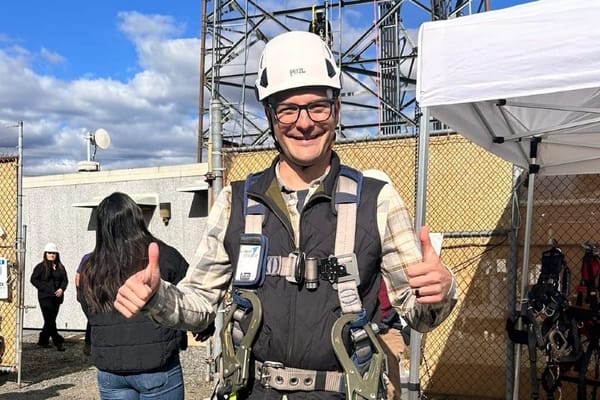WISPA Policy Heads Optimistic on More Spectrum
But they worry a change in FCC data collection could jeopardize BEAD funds for wireless providers.
Jake Neenan

LAS VEGAS, October 16, 2023 – Policy heads at the Wireless Internet Service Providers Association said on Wednesday they are optimistic about the Federal Communications Commission opening more spectrum for fixed wireless broadband providers.
Speaking on a panel at WISPAPALOOZA, the annual conference of small and fixed wireless internet providers, WISPA lawyers and policy heads touted a recent win on the Citizen’s Broadband Radio Service. The group is now making arguments for unlicensed use in the 12.20 to 13.50 GHz and 42 to 42.5 GHz bands, among others.
The CBRS is 150 megahertz of spectrum from 3550 MHz to 3700 MHz. It is available for use on a tiered basis. Government agencies get first preference, followed by those who purchased a “Priority Access License” from the FCC. The band is open at no cost for general access use, provided users do not interfere with the top two access tiers.
The Department of Defense manages a “dynamic protection area” system that tier-one users can use to activate CBRS bands in certain areas, kicking off PAL and general access users temporarily.
WISPA has been meeting with the DoD and the National Telecommunications and Information Administration to push them to ensure government users are activating DPAs judiciously, said Richard Bernhardt, the group’s vice president of spectrum and industry.
The group’s concern, he said, is that government agencies will disrupt WISPs operating on the CBRS if they activate protection areas for longer or on more bands than is necessary.
“Sharing doesn’t mean ‘just give us the crumbs that come out at the end.’ It means sharing,” he said.
WISPA is coming off a recent win on CBRS. The FCC changed on September 19 the frequency with which users are reauthorized in certain areas. In areas and bands not essential for government operations – the bottom 150 MHz and top 50 MHz outside of coastal DPAs – the commission extended that time from five minutes to 24 hours.
That will allow for more consistent service for WISPs using the CBRS because they will no longer be kicked off the spectrum for short disruptions in communication with the FCC’s spectrum access system.
There were originally two separate proceedings before the FCC dealing with 12,20 to 12.70 GHz and 12.70 to 13.25 GHz. The commission joined them in May into a single preceding, for which the comment period ended on September 8.
WISPA is pushing for sharing in the bands on an opportunistic basis, said Steve Coran, WISPA’s counsel and an attorney at Lerman Senter. That would allow WISPs to use spectrum without impeding incumbents already in the band.
Coran said this has a better chance of succeeding on the lower spectrum band, 12.20 to 12.7- GHz.
“Reading the tea leaves,” he said, the top band “seems to be set up for mobile.” But the lower band has less competition.
“I’m seeing a clear path on that,” he said.
The FCC also released in June a proposal on making 500 MHZ from 42 to 42.5 GHz available for use.
Comments ended on that proceeding about two weeks ago. WISPA’s filings make familiar proposals: the group wants non-exclusive licensing with an automatic frequency control system to prevent interference.
Providers would be able to operate in an area for 10 years, provided they deploy infrastructure within a year of receiving authorization.
There are other proposals, Coran said, including mobile use and a spectrum sensing plan from Qualcomm.
But Coran said he was not clear no how much energy is behind those arguments. “I don’t even know if they believe what they’re asking for,” Coran said of the Qualcomm proposal.
Technology codes and BEAD
The FCC also introduced a new technology code for its Broadband Data Collection program. Code 72 now houses fixed wireless internet using licensed-by-rule spectrum. That includes providers using the CBRS.
“We got pretty concerned,” said Louis Peraertz, WISPA’s vice president of policy.
That’s because the $42.5 billion Broadband Equity Access and Deployment program does not specify whether to categorize CBRS and similarly distributed spectrum as licensed or unlicensed. The program’s rules exclude unlicensed spectrum from the definition of reliable broadband, making the technology ineligible for BEAD funding.
WISPA heads met with the NTIA in January to voice concerns, but the agency did not give them a clear answer on what it plans to do about licensed-by-rule spectrum, Peraertz said.







